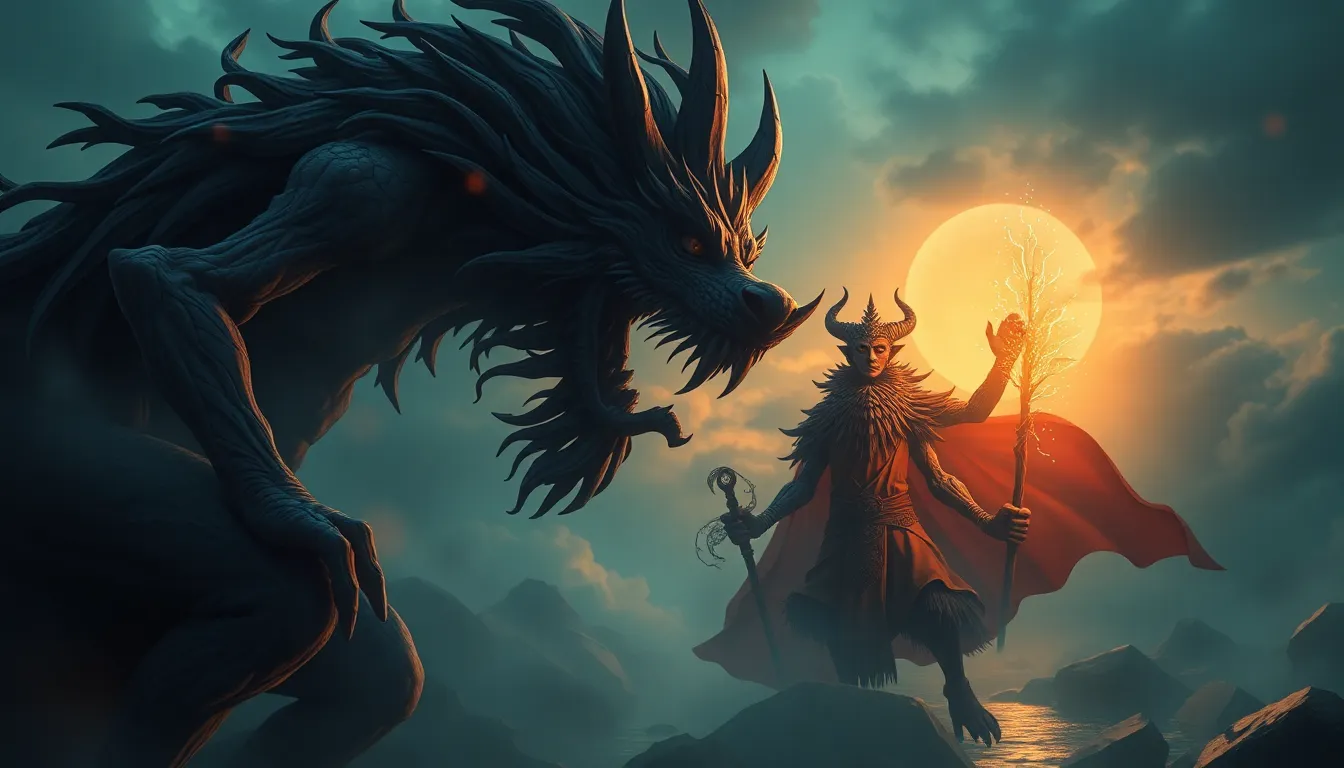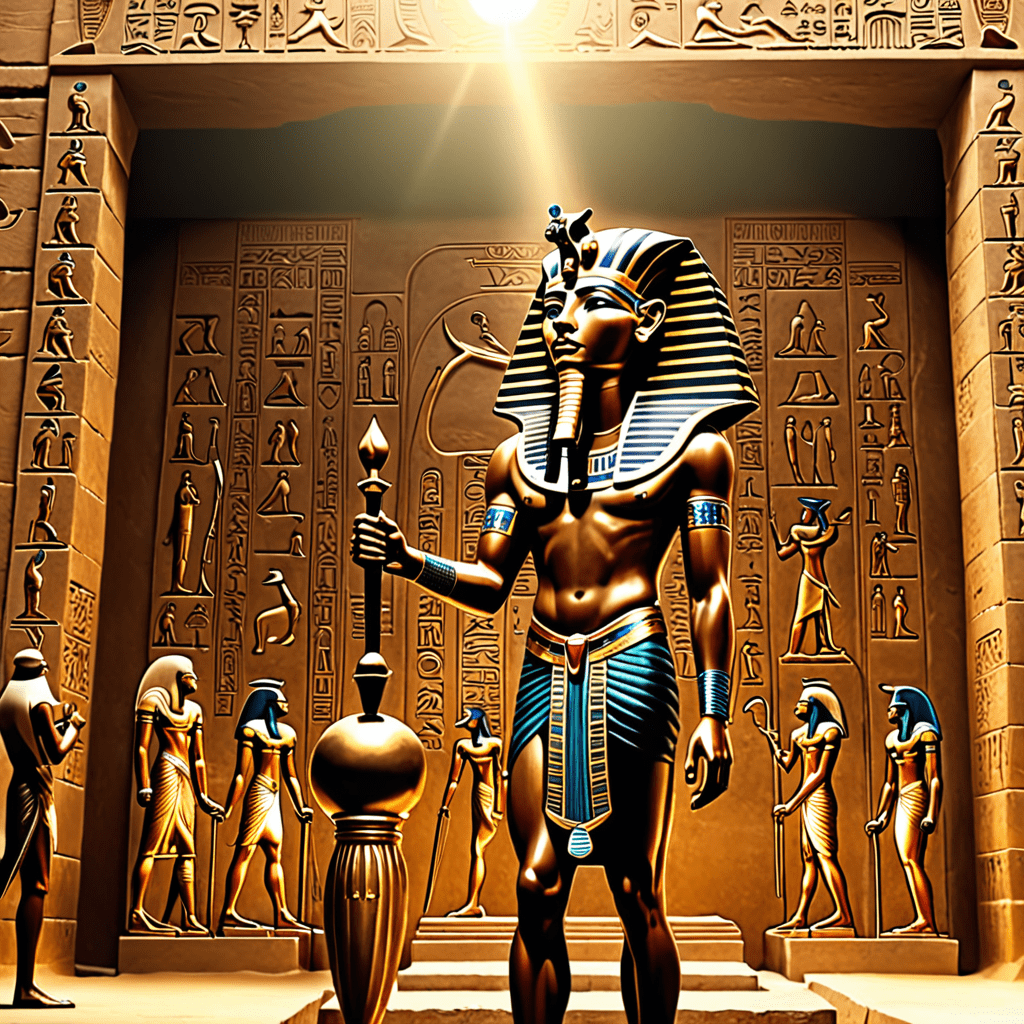Trickster Tales: A Reflection of Society’s Values
I. Introduction to Trickster Tales
Trickster tales are a fascinating genre of folklore that feature cunning and clever characters who often defy conventional norms. These narratives can be traced back to ancient cultures across the globe, with their origins rooted in oral traditions that were passed down through generations. Tricksters, such as Coyote in Native American folklore or Anansi the Spider in African tales, embody a range of traits, including intelligence, mischief, and an ability to navigate between the realms of the ordinary and the extraordinary.
Common themes within trickster tales include deception, transformation, and the subversion of authority. These stories often present trickster figures as both heroes and villains, challenging societal values and highlighting the complexities of human nature. The significance of trickster characters in folklore lies in their ability to comment on the human condition, providing insights into the values and beliefs of the societies that create them.
II. The Role of the Trickster in Different Cultures
Tricksters appear in various cultural narratives, each offering unique perspectives on society. Here are some notable examples:
A. Tricksters in Indigenous cultures
In many Indigenous cultures, trickster figures like Coyote and Raven serve as cultural heroes. They are often portrayed as creators who shape the world through their antics, embodying the spirit of adaptability:
- Coyote: A central figure in many Native American stories, Coyote is known for his cleverness and sometimes foolish behavior, teaching lessons about humility and the consequences of one’s actions.
- Raven: In Pacific Northwest mythology, Raven is a creator and a trickster who brings light to the world, often using trickery to achieve his ends.
B. Tricksters in African folklore
In African storytelling, Anansi the Spider is one of the most famous tricksters. This character is often depicted as a clever spider who uses his wits to outsmart larger animals. Anansi’s tales convey important moral lessons, emphasizing the value of intelligence over brute strength.
C. Tricksters in European literature
European folklore features trickster figures like Loki from Norse mythology and Reynard the Fox. These characters often navigate the complexities of power and deception, illustrating the dual nature of morality:
- Loki: A complex figure, Loki embodies chaos and mischief, often challenging the gods and altering the course of events.
- Reynard the Fox: A cunning character who uses his intelligence to outwit his foes, Reynard’s stories often critique social hierarchies and corruption.
D. Global perspectives: Common traits across cultures
Despite their differences, trickster figures across cultures share certain traits, including:
- Cunning and intelligence
- A tendency to break societal rules
- A dual nature that embodies both heroism and villainy
III. Trickster Tales and Moral Lessons
Trickster tales often convey moral lessons that reflect the values of the society from which they originate. These stories encourage critical thinking and challenge conventional wisdom.
A. Exploration of common morals in trickster tales
Common morals found in trickster tales include:
- The importance of wit over strength
- The consequences of greed and pride
- The notion that appearances can be deceiving
B. The duality of the trickster: Heroism vs. Villainy
The trickster’s duality complicates the moral landscape of these tales. While they may engage in deceitful practices, their actions often lead to positive outcomes or necessary change, prompting audiences to reflect on the nature of right and wrong.
C. How trickster tales challenge societal norms and values
By subverting expectations, trickster tales encourage audiences to question societal norms. They highlight inconsistencies in moral codes and the often arbitrary nature of authority, prompting critical reflection on the status quo.
IV. Trickster Tales as Social Commentary
Trickster tales often serve as a mirror to societal issues, reflecting power dynamics and social inequalities.
A. Reflection of societal issues
Many trickster narratives address issues such as:
- Power dynamics between different social groups
- Inequality and injustice
- The struggle for agency among marginalized communities
B. Tricksters as a voice for the marginalized
Trickster figures frequently give voice to those who are disenfranchised, using humor and cunning to challenge oppressive systems.
C. Historical context: Trickster tales during times of social upheaval
Throughout history, trickster tales have emerged during periods of social change, reflecting the struggles and aspirations of people in turbulent times.
V. The Psychological Significance of the Trickster Archetype
From a psychological perspective, tricksters play an essential role in understanding the human psyche.
A. Jungian perspectives on the trickster’s role in the psyche
According to Jungian psychology, the trickster archetype represents the shadow self, embodying the chaotic and unpredictable aspects of human nature.
B. Tricksters as catalysts for change and transformation
Tricksters often instigate change, pushing characters and societies to evolve beyond their limitations.
C. The balance of order and chaos in the trickster narrative
Trickster tales navigate the delicate balance between order and chaos, illustrating the necessity of both elements in the human experience.
VI. The Evolution of Trickster Tales in Modern Media
In contemporary storytelling, trickster tales have adapted to reflect modern societal values.
A. Adaptations in literature, film, and television
Modern adaptations of trickster tales often incorporate contemporary themes, addressing issues such as technology, identity, and social justice.
B. The emergence of new trickster characters in contemporary storytelling
New trickster characters, like Deadpool in comic books or characters in animated series, embody the spirit of the trickster while reflecting current societal values.
C. How modern trickster tales reflect current societal values
Contemporary trickster narratives often challenge authority and critique societal norms, resonating with audiences navigating a complex world.
VII. Trickster Tales in Education and Cultural Preservation
Trickster tales play a vital role in preserving cultural heritage and imparting ethical values.
A. The role of storytelling in preserving cultural heritage
Through storytelling, communities pass down their histories, values, and traditions, with trickster tales serving as essential vehicles for this cultural transmission.
B. Educational uses of trickster tales in teaching values and ethics
Educators utilize trickster tales to teach critical thinking and moral reasoning, engaging students in discussions about ethics and societal norms.
C. Engaging younger generations through trickster narratives
By adapting trickster tales for modern audiences, storytellers can capture the imagination of younger generations, ensuring the continued relevance of these narratives.
VIII. Critiques and Controversies Surrounding Trickster Tales
While trickster tales are celebrated for their rich cultural significance, they are not without critiques.
A. Misinterpretations and cultural appropriation
The retelling of trickster tales in ways that misrepresent or oversimplify cultural contexts can lead to cultural appropriation and misunderstanding.
B. The risk of oversimplification of complex characters and narratives
Modern adaptations sometimes reduce the depth of trickster characters, stripping away their complexity and the lessons they impart.
C. Discussions on authenticity and representation in modern retellings
Contemporary discussions focus on the importance of authentic representation in storytelling, emphasizing the need for voices from the cultures being represented.
IX. The Future of Trickster Tales in Society
As society evolves, so too will the narratives that reflect its values. Trickster tales remain relevant, offering insights and critiques of modern life.
A. The relevance of trickster tales in a changing world
In an era marked by rapid change and uncertainty, trickster tales provide a


